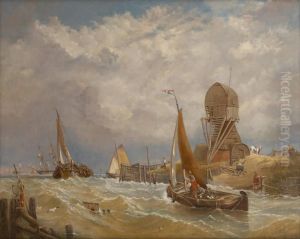Emil Genthe Paintings
Arnold Genthe was born in Berlin, Germany, on January 8, 1869. Despite the common mix-up, it's important to clarify that Arnold Genthe is the correct name of the photographer often mistakenly referred to as Emil Genthe. Arnold Genthe pursued an academic career initially, earning a Ph.D. in philology before moving to the United States in 1895. Initially settling in San Francisco, he worked as a tutor for the son of a wealthy German family, a position that gave him the freedom to explore his growing interest in photography. Genthe was largely self-taught in photography, and he quickly distinguished himself in the field.
Genthe's photographic work is best known for its documentation of San Francisco’s Chinatown and the 1906 San Francisco earthquake. His photographs of Chinatown, taken at the turn of the 20th century, are especially notable for their candid and unposed nature, offering a rare and insightful glimpse into the daily life of its residents. Genthe achieved these candid shots by carrying his camera in a handkerchief and using a remote trigger, thus capturing scenes without his subjects' awareness. This innovative approach allowed for a more natural and authentic portrayal of the community.
After the devastation of the 1906 earthquake, Genthe's photographs became an invaluable record of San Francisco before and after the disaster. His images of the city in ruins and the subsequent rebuilding efforts are some of the most iconic and historically significant visual documents of the event.
Following the earthquake, Genthe relocated to New York City, where he established a portrait studio. He became a sought-after photographer among the celebrities and social elite of his day, photographing figures such as Theodore Roosevelt, Woodrow Wilson, and Greta Garbo. Beyond portraiture, Genthe also had a passion for dance and theater, capturing many performers and performances with his camera. His contribution to the arts was not limited to photography; he was also an early adopter of color film and experimented with various photographic techniques throughout his career.
Arnold Genthe's work is characterized by its artistic quality and technical innovation. He had a unique ability to capture both the grandeur of landscapes and cityscapes and the intimate moments of people's lives. His photographs are held in high regard not only for their historical value but also for their aesthetic appeal and the sensitivity with which he approached his subjects. Genthe's legacy is preserved in collections at the Library of Congress and other institutions, ensuring that his vision and interpretation of early 20th-century life continue to inspire and educate. Arnold Genthe passed away on August 9, 1942, in New York City, leaving behind a body of work that remains influential in both the art of photography and the documentation of American history.
